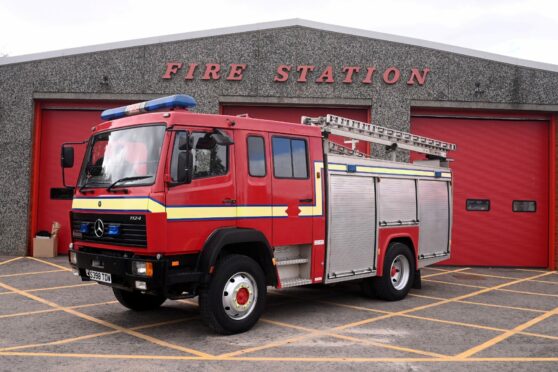Two fire stations in the north and north-east will need to be rebuilt after the discovery of Reinforced Autoclaved Aerated Concrete (RAAC).
The Scottish Fire and Rescue Service (SFRS) has revealed 14 fire stations in Scotland have been deemed “not fit for purpose” including those in Huntly and Portree.
The organisation has put urgent temporary measures into place to reinforce areas of the roofing.
However, they claim the safest and most cost-effective solution would be to rebuild these stations.
Replacing the 14 at risk fire stations would cost £77 million.
RAAC found in Huntly and Portree fire stations
Deputy Assistant Chief Officer Stephen Wood, Head of Service Delivery for the North of Scotland, said: “Some of our ageing buildings are no longer fit for purpose and require urgent action.
“We have a significant number of fire stations without provisions such as dedicated locker rooms, dignified facilities or sufficient showering facilities.
“Our buildings need to be safe, provide welfare facilities and comply with guidelines around decontamination after incidents to help protect our firefighters’ health.
“While we welcome the uplift in our capital budget, we do not have the budget to address this and doing nothing is simply not an option.
“We must find a permanent solution.”
What is Reinforced Autoclaved Aerated Concrete (RAAC)?
Reinforced Autoclaved Aerated Concrete is a form of lightweight concrete used in construction in many public buildings in the UK between the 1950s and 1990s.
RAAC, which is mainly found in roofs and occasionally in floors and walls, is a highly aerated material with properties different from those of conventional concrete.
In 2023, the UK Government raised major safety concerns about the structural integrity of buildings containing RAAC and ordered immediate action to be taken.
The discovery of RAAC in the Huntly and Portree fire stations comes two months after The Press & Journal reported the evacuation of hundreds of council home residents in Torry due to the finding of this material in their homes.
Fire crews ‘responding to fewer incidents’
Mr Wood has also highlighted how SFRS now responds to fewer house fires but more incidents of flooding and larger, more intense wildfires.
He said: “Last year we saw extreme weather events that placed an unprecedented demand on our emergency service.
“This included one of the largest wildfires on record at Cannich in the Highlands and Storm Babet, which devastated many communities in the north east.
“These types of incidents require the deployment of hundreds of firefighters and often occur in areas where we do not have permanently staffed stations.
“We have prioritised investment and bolstered our fleet in recent years with the addition of 20 specialist water rescue boats and the implementation of 25 dedicated wildfire stations across Scotland.
“But we expect climate change to intensify and present further challenges that we must be prepared to meet.”


